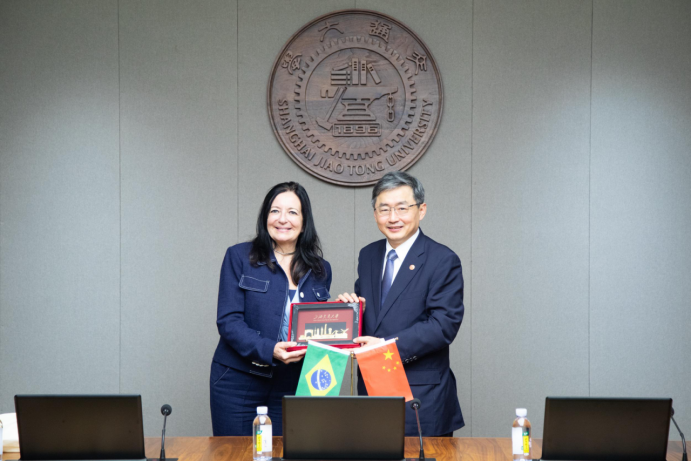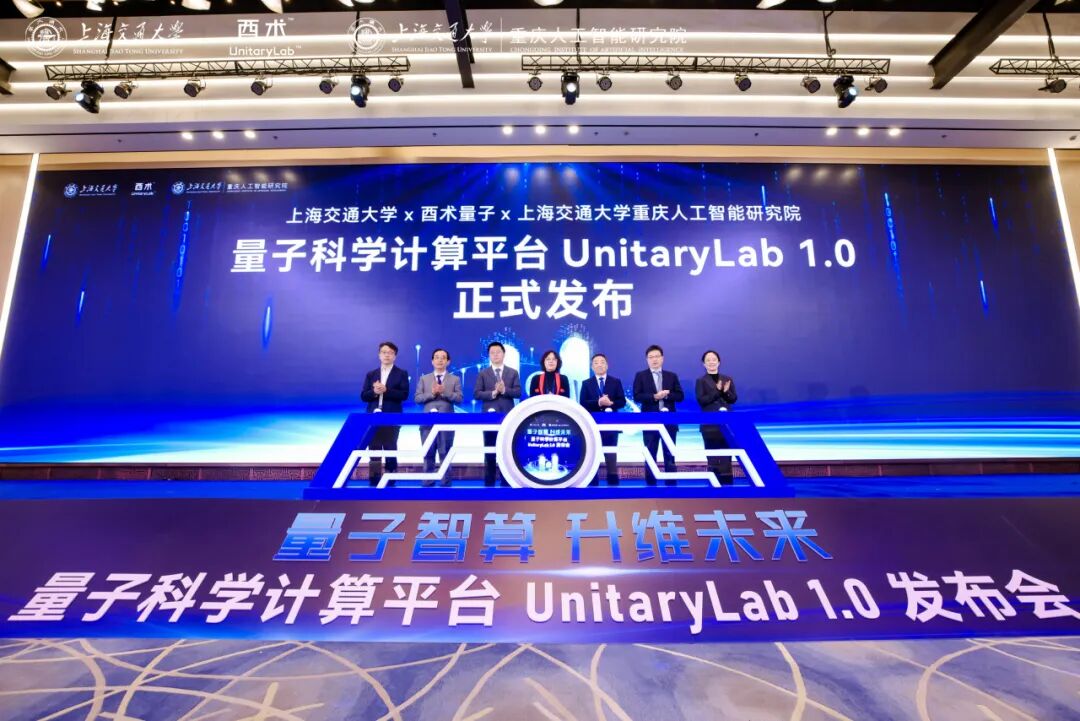On February 6, 2025, Nature, a top international academic journal, published Metal-halide Porous Framework Superlattices, the research results of Prof. Yong Cui’s team and his collaborators. The School of Chemistry and Chemical Engineering, the Frontiers Science Center for Transformative Molecules and the State Key Laboratory of Metal Matrix Composites of SJTU were the first institutional affiliation of the first author, doctoral student Wenqiang Zhang. Prof. Yong Cui from SJTU School of Chemistry and Chemical Engineering, Prof. Xiangfeng Duan from the University of California,Los Angeles (UCLA), and Prof. Yihan Zhu from Zhejiang University of Technology (ZJTU) are the co-corresponding authors. Prof. Dehui Li from Huazhong University of Science and Technology (HUST), Prof. Jianwen Jiang from the National University of Singapore (NUS), and Prof. Qun Zhang from the University of Science and Technology of China (USTC) provided important support in chiral optics, molecular dynamics simulation, and ultrafast spectroscopy experiments, respectively.
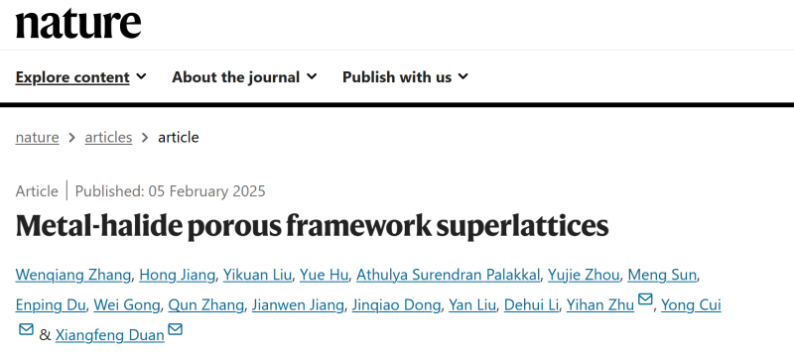
Superlattice materials are capable of realizing tunable electronic and optical properties through the design and tuning of periodic potentials and high-precision layered structures, and have been widely used in the fields of two-dimensional electron gases, high electron mobility transistors, and quantum cascade lasers. Conventional growth techniques, such as molecular beam epitaxy and chemical vapor deposition (CVD), are capable of tuning sub-nanometer thickness, but limit the further development of superlattice materials. Nowadays, superlattice materials are transitioning from traditional semiconductor superlattices to self-assembled systems with multiscale building units (e.g., nanoparticles, nanowires, nanosheets, and molecules). The components of self-assembled superlattices are usually confined to building units of the same dimension and the same or complementary topology, which somewhat limits the diversity of superlattice structures and their functional tunability. Heterogeneous/heterodimensional superlattices assembled from different dimensional building units can bring new electronic, optical and quantum properties, which greatly enriches the family of superlattices; in particular, chiral superlattice materials show great potential for applications in chiral optics, chiral electronics and chiral superconducting materials. However, the precise synthesis and atomic-level structural characterization of single-crystal and multidimensional superlattices are extremely difficult due to the structural disorder at the interfaces of the building units. Therefore, the development of new synthetic strategies to successfully realize the preparation and structure resolution of single-crystal superlattices has become one of the key challenges in the interdisciplinary fields of coordination chemistry, synthetic chemistry and materials chemistry.
Prof. Yong Cui’s team at SJTU has long been working on chiral aggregation and crystallization, focusing on non-homogeneous asymmetric catalysis, chiral separations, and innovations in optoelectronic functional material devices. The team has promoted rapid progress in related fields by developing novel chiral porous materials (Nat. Synth., 2025, 4, 43-52; Nat. Chem. 2024, 16, 1398-1407; Nature 2022, 602, 606 -611; Chem. Rev., 2022, 122, 9078-9144; J. Am. Chem. Soc., 2024, 146, 31807-31815). In order to solve the aforementioned scientific challenges in single-crystal superlattice research, the team proposed the “MOF templates” strategy. Based on Zr-MOF coordination templates, they successfully synthesized multiple series of highly ordered single-crystal porous superlattice frameworks by using the guiding effect of unsaturated coordination nodes of zirconium clusters. Within different three-dimensional zirconium-based MOF frameworks, in situ confined growth of metal halides (e.g., PbI2, PbBr2, CdI2, and NiBr2) were accurately composited with the lattice of the MOF templates, and multi-dimensional single-crystal superlattice frameworks were successfully prepared. Meanwhile, the chiral conversion and chiral photofunctional regulation of the superlattice materials were realized, which opens up new ideas and methods for the building and application of chiral materials.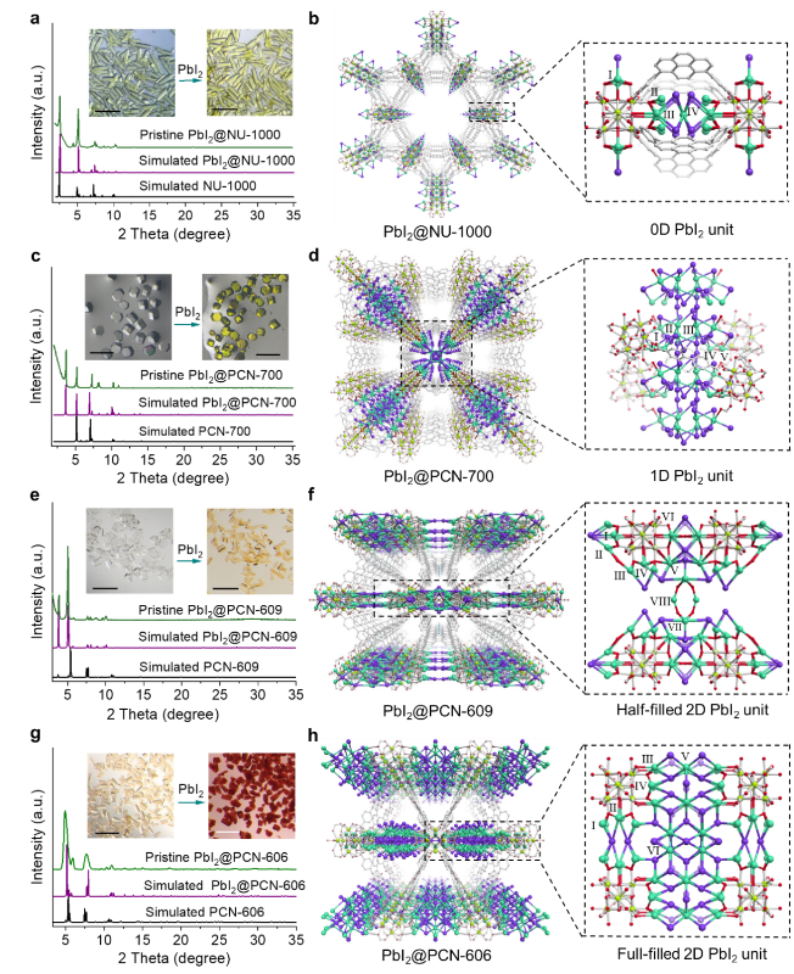
Fig. 1 Structural characterization of multi-dimensional superlattices
The team demonstrated that the MOF pore environment (e.g., the size and shape of the cavities and the orientation of neighboring binding sites) plays a key role in tuning the dimensionality of the metal halide sublattices (zero, one, and two dimensions). These superlattice crystals were characterized by single-crystal X-ray diffraction (SC-XRD) and low-dose high-resolution transmission electron microscopy (HR-TEM) (as shown in Fig. 2), confirming the higher-order superlattice structure of the framework with precise atomic coordinates.
Fig. 2 Low-dose high-resolution electron microscopy imaging of PbI2@MOF superlattices
To further investigate the growth mechanism of confined nucleation, the research team conducted time-dependent nucleation control experiments to track and monitor the in-situ growth process of PbI2 in MOF. Taking PCN-606 as an example, as shown in Figure 3, the formation process of the PbI2 sublattice can be precisely monitored from the SCXRD data, which evolves from partially filled zero-dimensional nanoclusters (PbI2@PCN-606-I, II, and III) or one-dimensional nanosheets (PbI2@PCN-606-IV), to fully filled two-dimensional nanolayers (PbI2@PCN 606-V).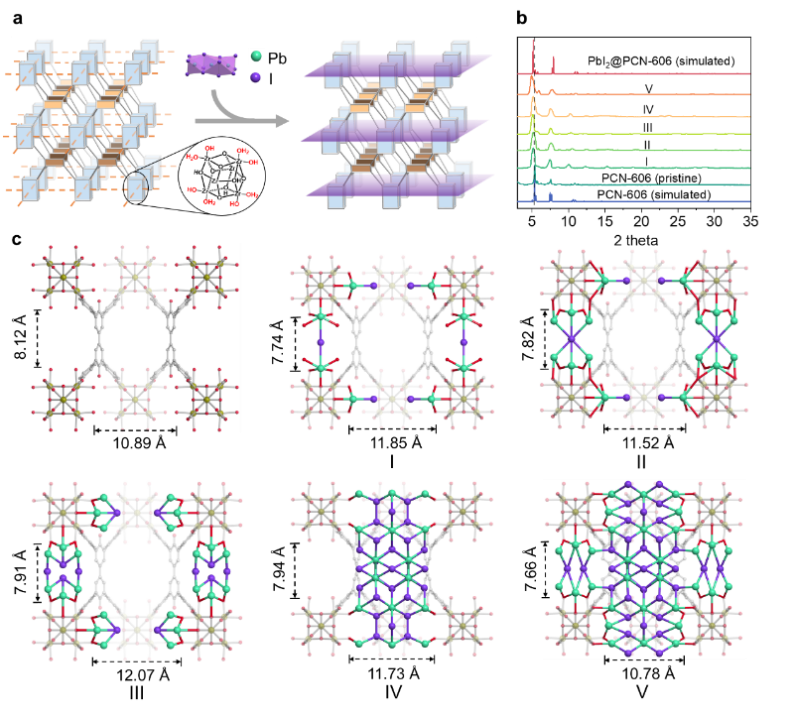
Fig. 3 In situ confined growth of 2D PbI2@PCN-606 superlattice
Based on the photoelectric properties of PbI2-like materials and the porous nature of the single-crystal PbI2@MOF superlattice, the authors introduced organic amine ligands into the porous superlattice framework using a simple molecular diffusion method to form an organic-inorganic hybrid perovskite-like structure, which modified the electronic band structure, charge-carrier dynamics, and photoluminescence properties of the superlattice. Modified by different amine molecules, the perovskite-like superlattices exhibited dimension-dependent photoluminescence and chiral-induced circularly polarized luminescence properties (Fig. 4). Among them, the chiral polarization ratio P-value is as high as 29%, which is the highest among the current organic-inorganic lead iodide hybrid materials, which is crucial for the development of spintronic devices and advanced photonic systems. Such structure/dimension-dependent optoelectronic properties can greatly advance the development of optoelectronics, with potential application value in quantum computing, secure communications, and efficient displays.
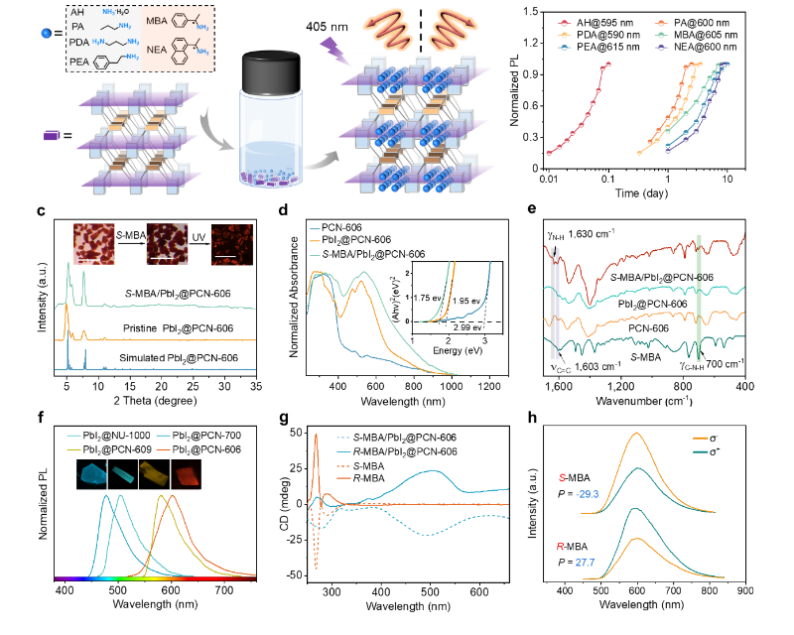 Fig. 4 Preparation and optical properties characterization of amine-modified perovskite-like PbI2@MOFs superlattices
Fig. 4 Preparation and optical properties characterization of amine-modified perovskite-like PbI2@MOFs superlattices
In summary, this research is centered around a coordination template-driven in situ assembly strategy, which utilizes zirconium-based MOF templates to realize the directed nucleation growth of metal halide sublattices, and a series of novel multidimensional single-crystal porous superlattice frameworks have been successfully constructed. Through precise single-crystal structure analysis, the complex structure of the superlattice and the structure-activity relationship with its function are revealed, and the confined in situ growth mechanism is further elucidated, which significantly improves the stability of the superlattice. The researchers also successfully introduced chiral amines to prepare chiral perovskite-like superlattices, realizing the chiral conversion of materials and the regulation of chiral luminescence function. Based on the diversity of MOF templates and inorganic building units, this study opens up a new platform for constructing higher-order single-crystal porous superlattices beyond traditional crystalline solids, and provides a new idea and an important foundation for regulating the chiral, electronic, optical, and quantum properties of superlattice materials.
This research is funded by the National Natural Science Foundation of China, the Ministry of Science and Technology and the Shanghai Science and Technology Commission.
Paper link: https://doi.org/10.1038/s41586-024-08447-0


